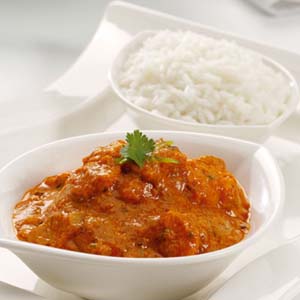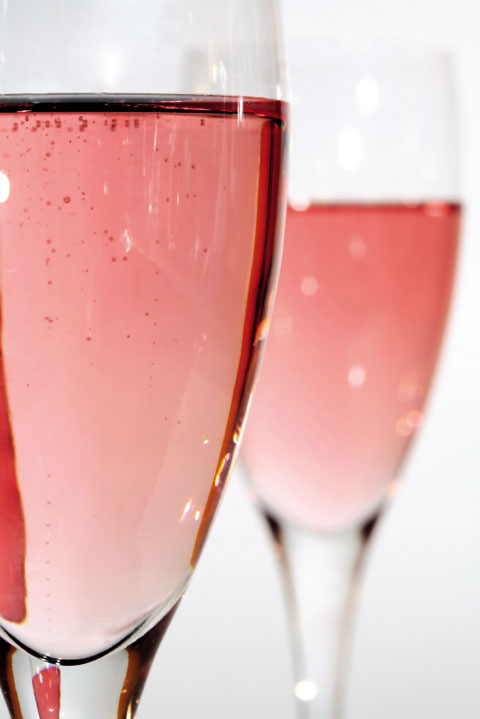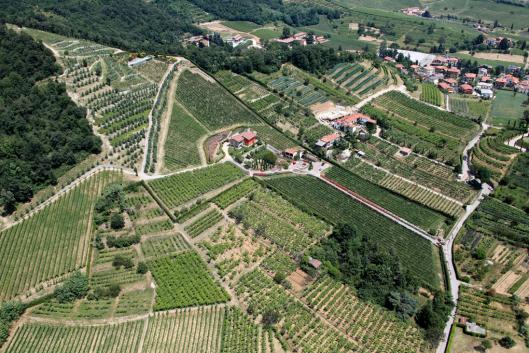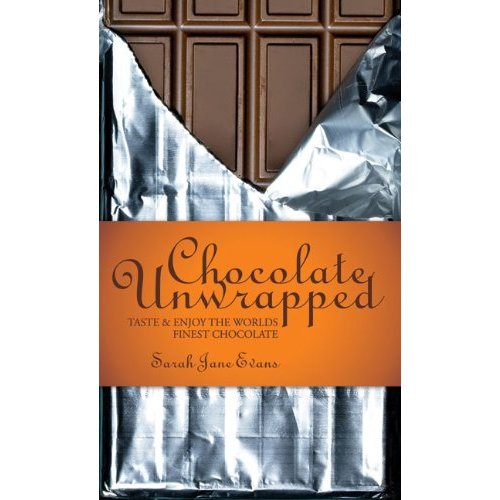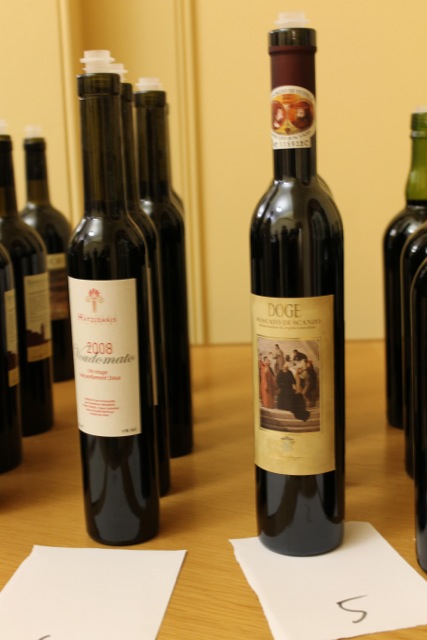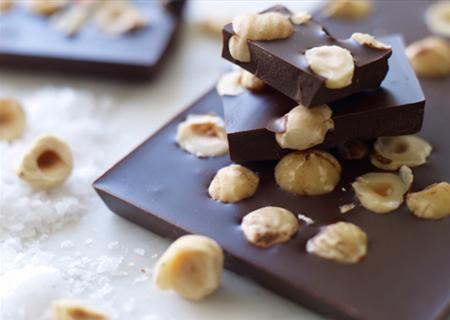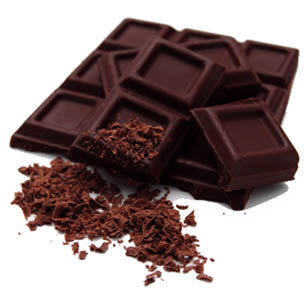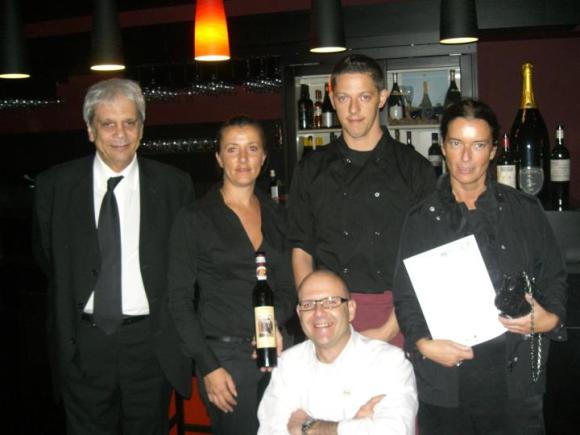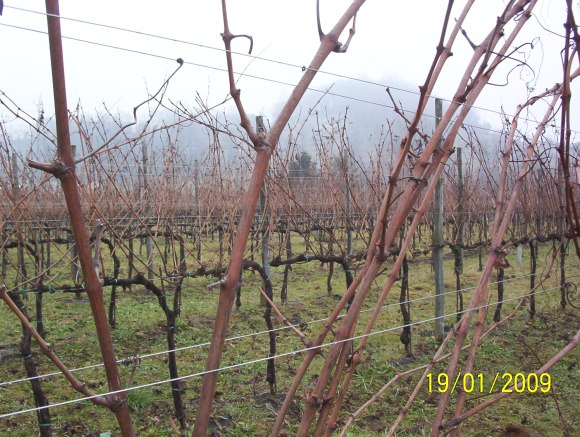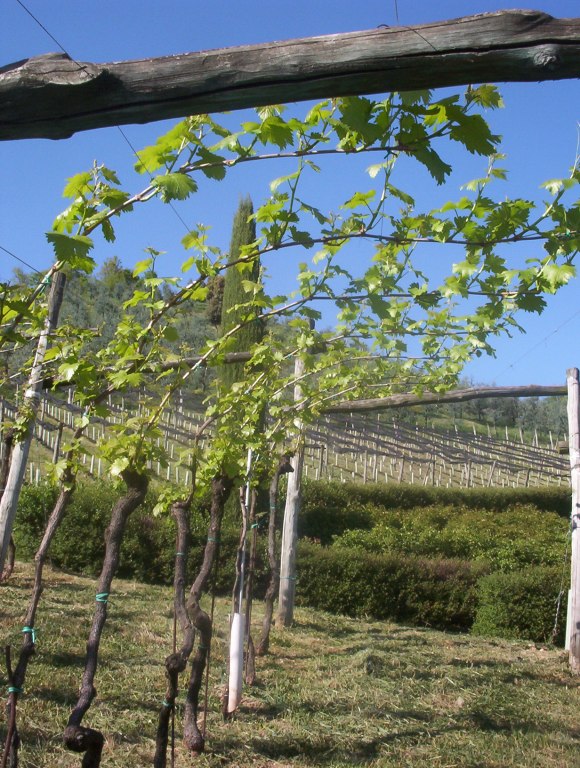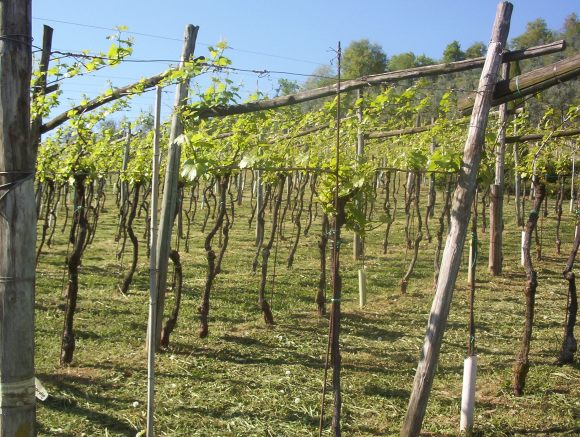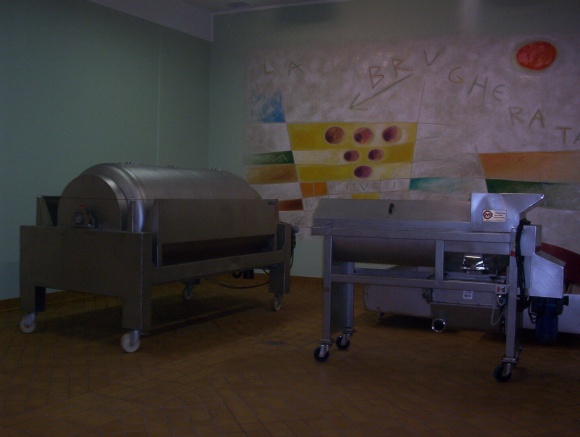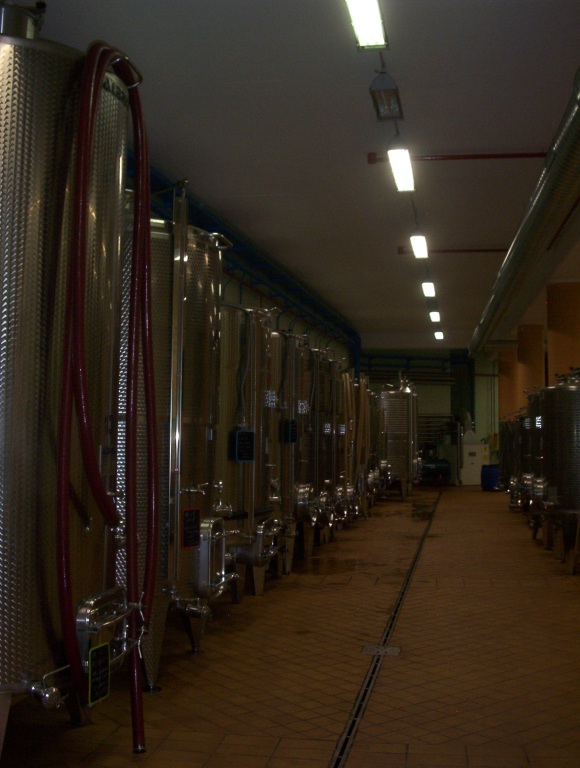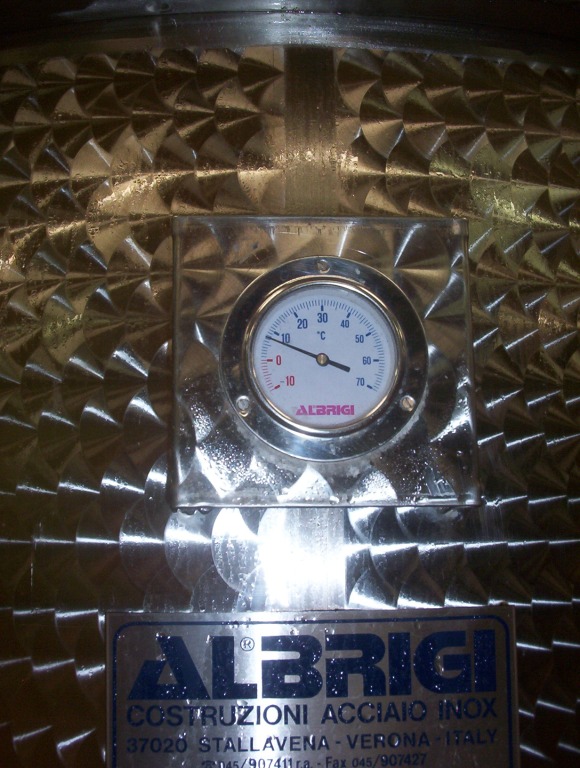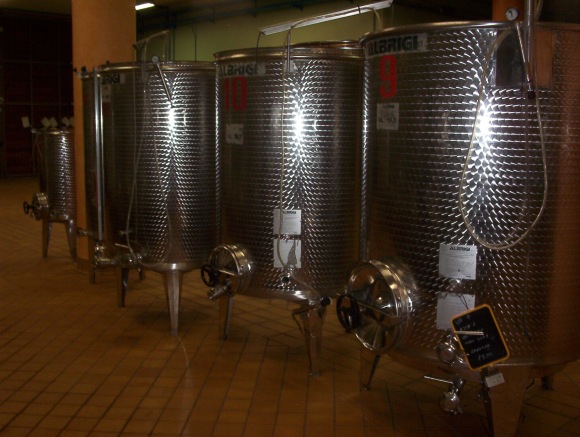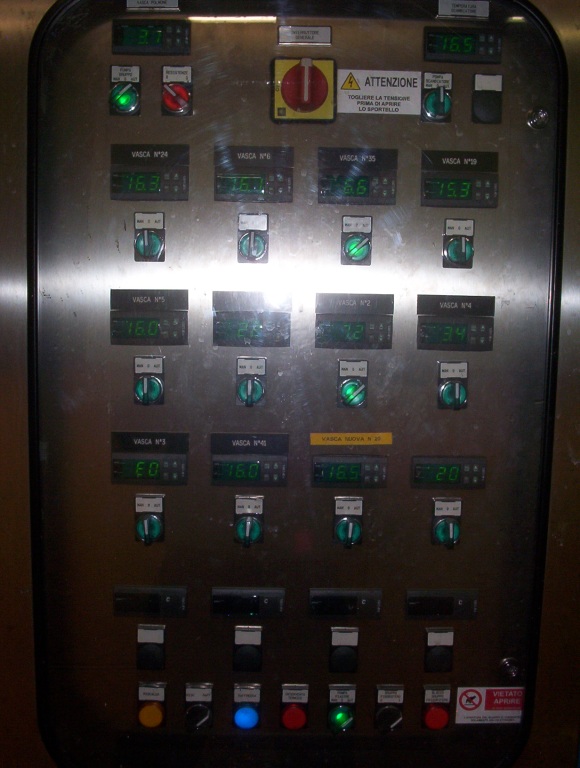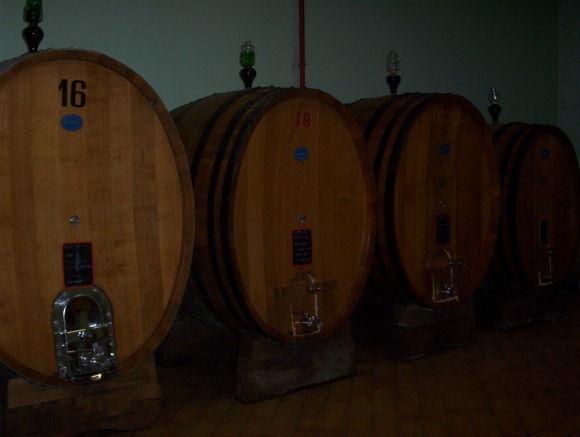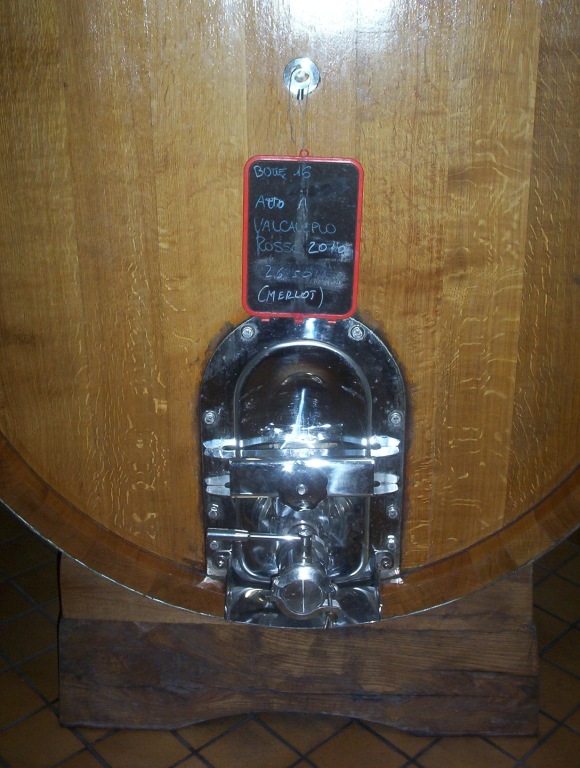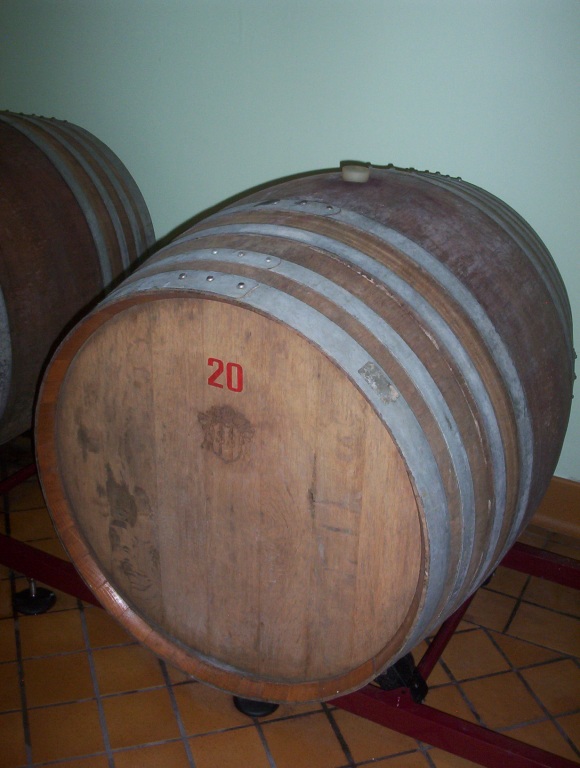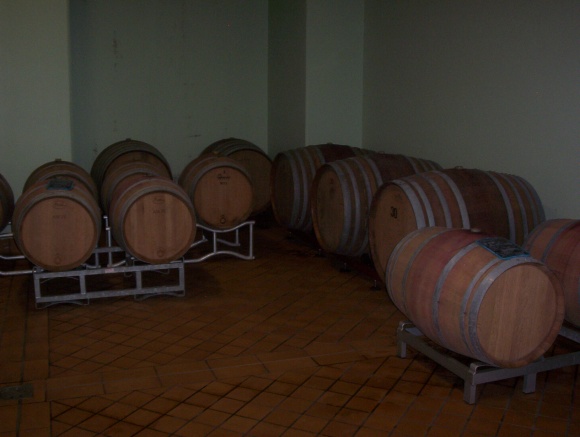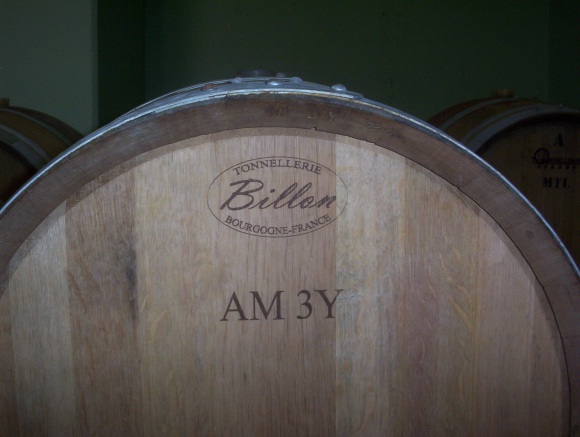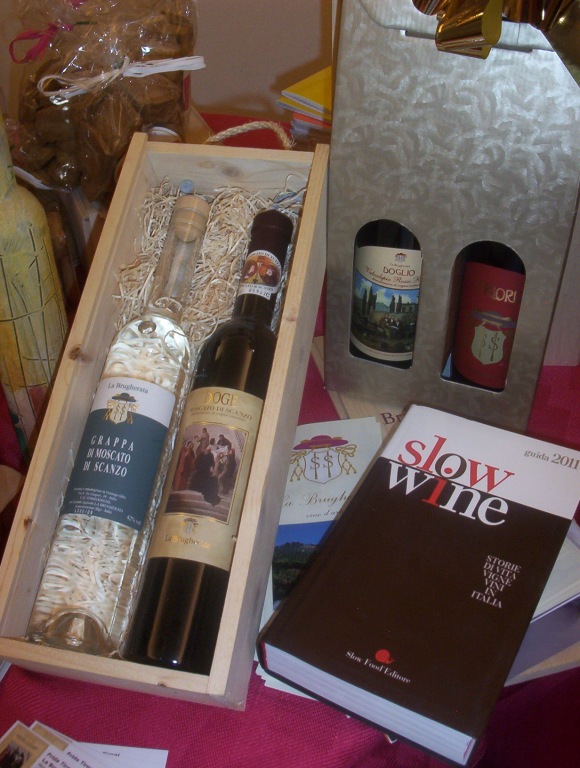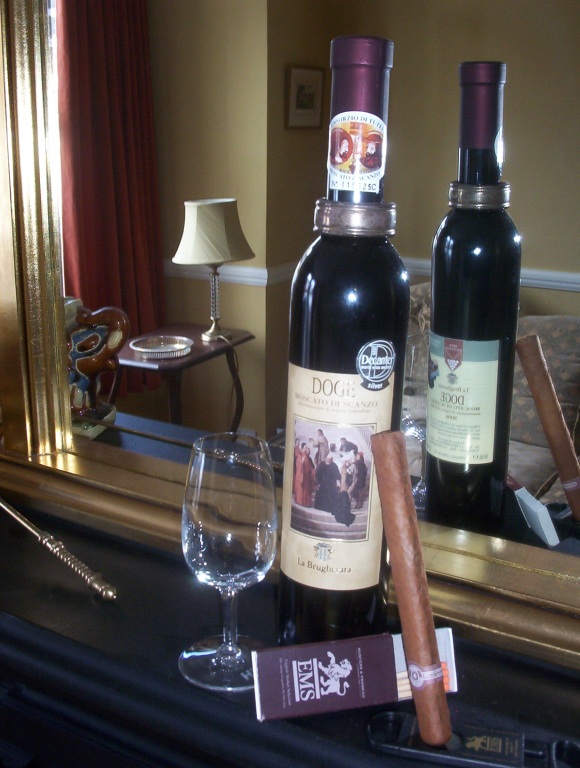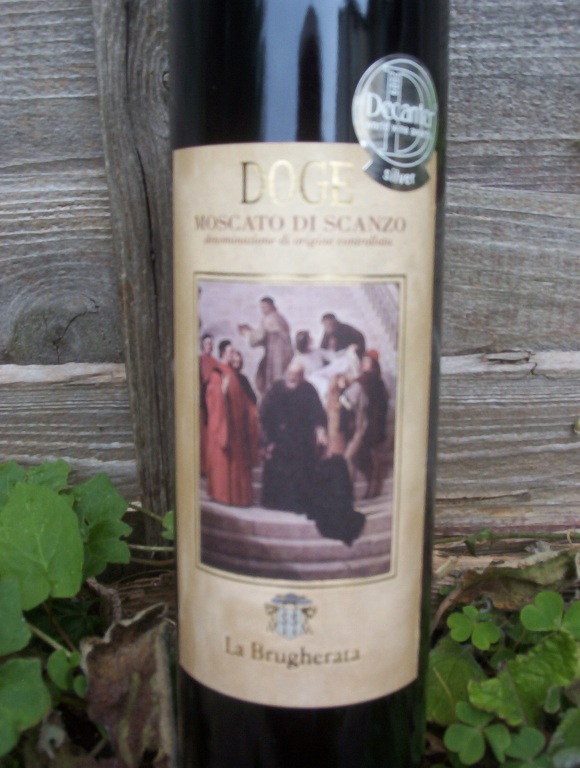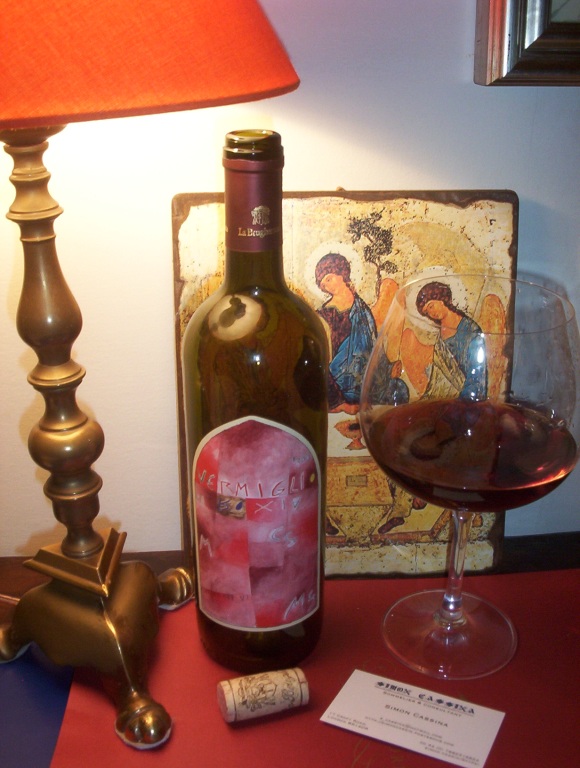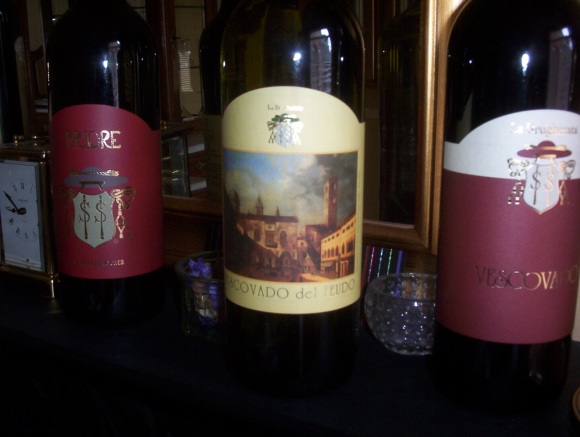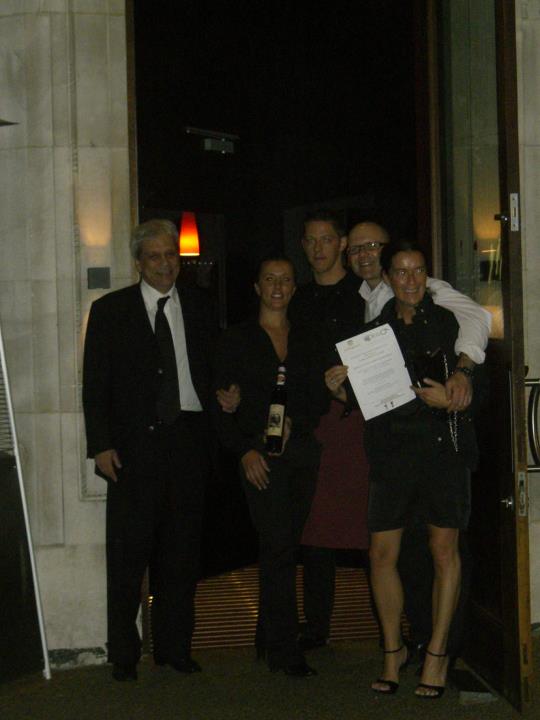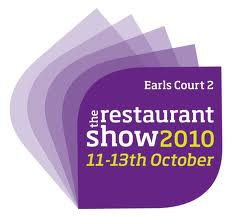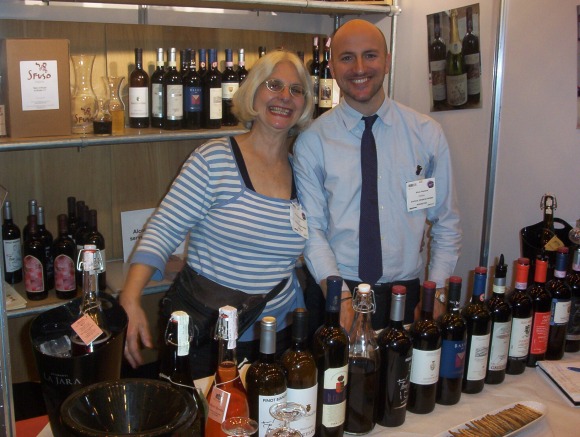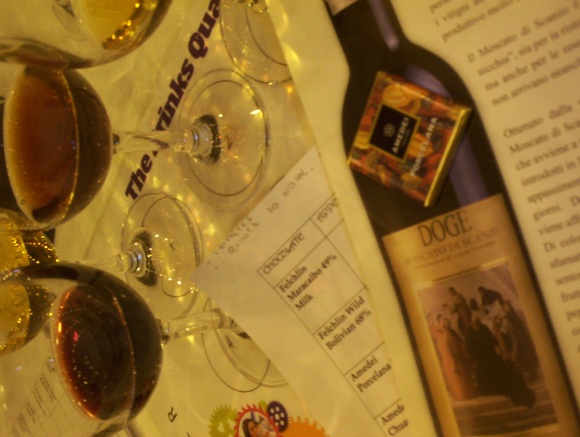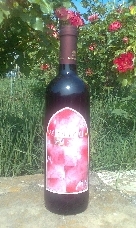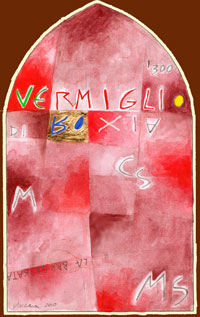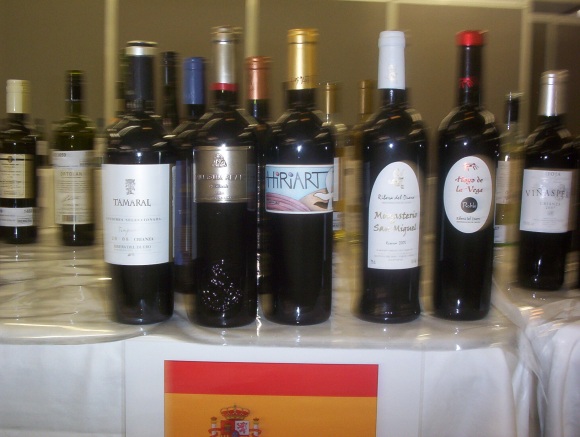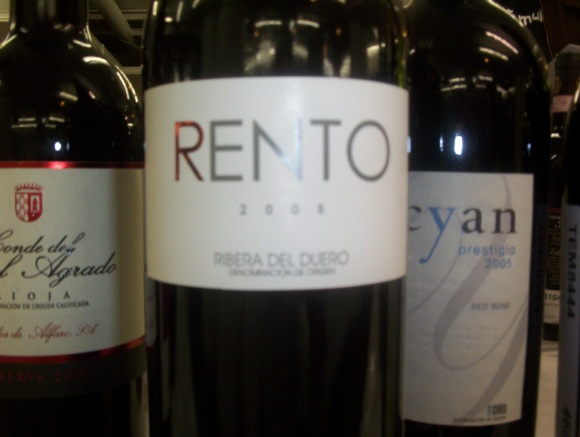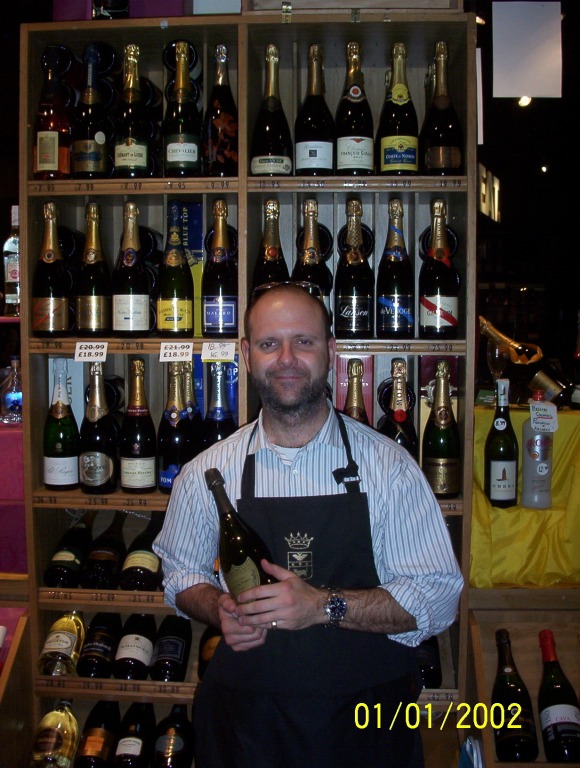|
Come vive e come opera un italiano al quale capiti di lavorare come enotecaro, o meglio come “caviste” di un’importante catena francese in quella capitale del vino che è Londra? Per saperlo ho pensato di chiederlo aSimone Cassina, bergamasco di origine, che da cinque anni lavora per il gruppo Nicolas Castel Group nella capitale britannica. Un’interessante testimonianza, la sua, che ci aiuta a capire quale fenomeno complesso e globalizzato sia diventato ormai il vino e di quali elementi si debba necessariamente tenere conto per provare ad agire con successo su un palcoscenico importante, ma difficile, com’è il Regno Unito, dove la professionalità, l’attenzione a tutto quanto accade attorno a te, la curiosità e la voglia di imparare e crescere sono elementi fondamentali. Un racconto, quello di Cassina, utile per capire come un giovane italiano animato dalla voglia di fare possa fare strada e imporsi anche in UK.
Com’è iniziato il suo rapporto con il vino?
Il vero rapporto con il vino é iniziato quando mi son trasferito a Londra, riscoprendo tutti i prodotti italiani sotto un diverso aspetto. All’estero si diventa orgogliosi del nostro patrimonio, stile di vita e si vorrebbe far conoscere a tutti il nostro Made in Italy.
Quali esperienze ha maturato in Italia e perché ha deciso di trasferirsi in UK?
La mia vera palestra di vita é stata l’avventura decennale nel movimento scout di Bergamo. Nel frattempo ho conseguito il diploma di ragioneria, fatto il servizio militare e subito dopo ho trovato lavoro in un ufficio commerciale. Il mio spirito d’artista, mi ha spinto verso il libero mondo della musica. La parte più interessante é stata quella di vivere centinaia di concerti a contatto con il pubblico in diverse parti della Lombardia dietro la mia batteria.
Registrati quattro CD in Italia, all’età di 27 anni, decisi di seguire ciò che mi rendeva felice. Nel 1998 lasciai tutto per la capitale europea del rock, terra natale dei Led Zeppelin, Londra. All’epoca, fui spinto dall’euforia della nuova figura del cittadino europeo. Avrei potuto lavorare e vivere senza permesso di soggiorno in una città multirazziale e dinamica, a sole due ore di volo da Milano.
Nel Regno Unito quali esperienze professionali ha maturato, dove ha lavorato e come si è sviluppata la sua carriera?Arrivato con un inglese scolastico, fui meravigliato nello scoprire quanto fosse facile integrarsi a Londra. Spinto dall’energia dell’esplorare, in sole due sole settimane trovai lavoro come commis chef vicino a Greenwich. Lo chef scozzese rimase colpito dalla mia passione per il cibo e mi diede l’opportunità di esprimere le miei naturali qualità di buongustaio. Nel tempo libero, decisi di migliorare il mio inglese scolastico iscrivendomi ad un corso, dato che lo chef di Glasgow non lo capivano nemmeno gli stessi londinesi. Un anno dopo, decisi d’aver imparato l’arte e la misi da parte.
Con l’aiuto del governo inglese iniziai il mio diploma come tecnico del suono Nvq level 4 alla City and Islington University. Nel frattempo entrai a far parte della band grange rock Spiderhound. Registrai un mini cd e feci una decina di concerti nel nord est di Londra. Come avrete capito, non fu un gran successo non avendoci mai visto su MTV. Nello stesso periodo lavorai come freelance per ditte specializzate in music post production, dvd, videogames, telefonia. Dopo tre anni, da buon latin lover, m’innamorai di Jacqueline che mi apri al mondo della borghesia e dell’etichetta inglese.
Mi convinse a lasciare la direzione presa e trovai lavoro come impiegato statale e successivamente lavorai per Royal Mail. Mi diede la possibilità di comprar casa ed inserirmi completamente nella loro società, pur restando italiano. Iniziai ad appassionarmi sempre di più al mondo del vino e scoprii tutte le diverse zone di produzione nel mondo. Durante una visita a Bergamo, diventai export agent per l’azienda La Brugherata. Mi abbonai a Decanter Magazine e trovai molto interessante la selezione di vini presso l’enoteca francese Nicolas. Un ritorno al vecchio mondo: terroir, tradizione e modo di produrre e concepire molto vicino all’Italia.
Pur rimanendo in competizione con i Galli, c’é una sorta di rispetto reciproco, giocando entrambi fuori casa. Nel 2006, la caviste di Nicolas, mi disse che avrei potuto lavorare per loro e mi suggerì il contatto al quale inviai il mio curriculum. Pur con una preparazione di base, ma considerando le mie esperienze lavorative precedenti, l’azienda decise di affidarmi la gestione del negozio in Farringdon (central London) con un turnover di £ 450,000.
Da allora, mi sono dedicato con passione nella vendita ed ho avuto la possibilità di lavorare con diversi Sommelier, crescendo nella “Boutique du Vin”. A Londra, il mondo del vino è molto attivo e, nonostante la crisi economica, ho costantemente l’opportunità di crescere a 360 gradi. Partecipando alle innumerevoli degustazioni di vini provenienti da tutte le parti del mondo, si ha la possibilità di incontrarsi e confrontarsi con i grandi personaggi e protagonisti del mondo del vino; la stampa, la critica, la ristorazione, la distribuzione a tutti i livelli (ON & OFF Trade). Attualmente, sto studiando per il diploma livello 4 presso Wine and Spirit Education Trust.
Come si svolge la sua attività di “caviste” – enotecaro in Inghilterra?
La professione di “enotecaro” a Londra é davvero interessante e particolare. Il cliente crede molto nella professionalità del caviste, tende ad avere una mentalità aperta ed è piacevolmente interessato ad ascoltare suggerimenti. Personalmente, trovo molta soddisfazione ogni volta che i miei clienti mi comunicano il loro appagamento nell’ aver degustato qualcosa di non conosciuto, da me suggerito.
Qui, il tempo e denaro ed è necessario saper lavorare bene e ad un ritmo pressante. Lavorando per Nicolas, parte del potentissimo Castel Group, si ha un’immediata prospettiva di carriera, se si è in grado di dimostrare la volontà di crescere in un ambiente professionale estremamente dinamico, di scuola francese. La loro attitudine é molto aperta e non cercano d’imporsi come “miglior produttore nel mondo”. Adottano una politica molto rilassata, pur mantenendo la loro identità.
Grazie a motivi storici, i loro prodotti sono ben conosciuti in UK. I “Brands” che i Francesi hanno saputo creare (Champagne, Bordeaux, Bourgogne, Armagnac, Cognac…) sono largamente apprezzati dagli Inglesi. Inoltre, é facile apprendere e leggere tutti i giorni a proposito del loro vino. Per questo motivo è possibile pensare ad un negozio con solo vino francese. Impensabile, al momento, l’enoteca italianissima.
Se dovesse dare un consiglio ad giovane italiano attivo nel mondo del vino che volesse trasferirsi e fare un’esperienza di lavoro in UK, che tipo di professionalità e di sensibilità gli direbbe che serve per operare con buone probabilità di successo in quel Paese?
Principalmente, é essenziale essere in grado di comunicare con il vostro cliente. É necessario, quindi, avere un buon livello di conoscenza della lingua inglese; non esiste corso di inglese, in Italia, che possa garantirvi una buona padronanza di linguaggio. Non si può apprendere la lingua inglese in tre mesi. Bisogna parlarla tutti i giorni e capire la cultura e modo di pensare dell’anglosassone.
Un’attitudine amichevole e un sorriso aiutano sempre a coprire una non perfetta conoscenza della lingua. Inoltre, l’accento italiano, nel nostro settore, é un ottimo vantaggio nella fase di vendita. Gli Inglesi, inizialmente, possono sembrare freddi; vi devono studiare…se decidono che siete ok, allora si apriranno a voi. Sta a voi esser molto spontanei. Se si intende lavorare nel mercato dell’off trade, è necessario possedere AIS o WSET Diploma o corrispettivi, titolo di studio nel settore commerciale ed aver maturato almeno un anno d’esperienza lavorativa nel settore del vino in Italia, magari in un ambiente turistico internazionale (farebbe una buona impressione sul vostro curriculum).
Inoltre, è fondamentale avere tanta energia positiva e soprattutto, avere una gran voglia di fare, imparare ed adattarsi. Imparate ad avere il “self control” perché sarete certamente messi alla prova a livello psicologico; non arrabbiatevi perdendo la facoltà di pensare razionalmente, soprattutto se non ne vale la pena. Ricordate sempre che siete ospiti. L’Italiano arrogante e troppo sicuro di sé non ha mai fatto carriera a Londra.
Puntate molto sul fatto che qui, la diversità, é un valore. Non parlate troppo, ascoltate. Ricordatevi il concetto di privacy. Non siate troppo invadenti. Non cercate di fare “il brillante” a tutti i costi. Non siate troppo amichevoli o gentili, alcune volte é visto come segno di debolezza. Trovate il giusto equilibrio, non troppo ai due estremi. Non criticate solo, ma siate costruttivi. É importante saper lavorare in “a team” e non solo per voi stessi. Imparerete a stare bene con voi stessi senza contare troppo sul supporto emotivo degli altri. Aprite la vostra mente!! L’ Italia non é l’ombelico del Mondo. Non abbiate paura, l’importante é fare il primo passo..
Lei sta studiando per conseguite il Diploma WSET: ha già avuto una formazione come sommelier in Italia e quale differenze ha verificato tra i due sistemi di insegnamento?
Non ho avuto modo di fare il corso AIS in Italia, ma ho preso in considerazione l’idea di farlo qui a Londra. Conosco e ho lavorato con Sommeliers Italiani e sono in contatto con AIS Londra. Considero i tre livelli AIS complementari al corso advance Certificate level 3 Wset ed hanno alcune parti in comune. Il diploma Wset level 4 é suddiviso in 6 Units, dura due anni e penso sia a un livello di conoscenza superiore, forse comparabili ai master AIS.
La principale differenza che ho riscontrato é riconducibile alla “didattica”. Posso dire, brevemente, che AIS ha una marcia in più su argomenti quali birra, vini d’Italia e abbinamento cibo, figura del sommelier e servizio (divisa inclusa). Direi più legato all’ambiente ristorante.
Ho optato per Wset (e come me hanno fatto altri sommelier da tutte le parti del mondo), perché vivo a Londra e vorrei diventare un buyer per un importatore distributore inglese. Wset ha finanziatori molto importanti nel settore ed il Certificate conseguito, è riconosciuto come titolo di studio dal Governo Inglese e da molti altri Paesi nel Mondo. In questo caso torna molto utile anche il fattore commerciale, marketing, statistiche, vendite, determinazione prezzi, trends e scrivere articoli, tesine.
Ti spingono a scrivere e presentare il vino al mondo, in English, lavorando con un altri studenti in diverse parti del mondo. Io sto facendo il corso on line: affrontare tematiche quale tappo a vite o sughero?..per esempio. Inoltre si approfondiscono di più vini da tutte le parti del mondo. Nel diploma ti insegnano come attingere a diverse fonti, specialmente on line. Sta alla persona spingere i propri limiti oltre a quello richiesto dai loro parametri. Una preparazione a 360 gradi. La persona alla fine del corso ha una buona preparazione e può decidere in che direzione andare.
Lei opera a Londra, nella catena di negozi specializzati francesi Nicolas: con quale criterio vengono scelti oggi i vini, quali caratteristiche devono avere per entrare nel portafoglio della società? Si può idealmente dire che “non vendiamo vini che non vorremmo bere”, oppure a volte si è portati anche a scegliere vini che non piacciono particolarmente ma che hanno richiesta e si vendono facilmente?
La selezione viene fatta nei nostri uffici e laboratori nella periferia di Parigi (Thiais). Dopo aver considerato la richiesta da parte del mercato, prezzi, quantitativi e il grado di affidabilità dell’esportatore, vengono effettuate le analisi chimiche, organolettiche, fisiche ed olfattive del vino. Se, questo primo stadio viene superato, vengono avviate le trattative economiche. Inizialmente, il prodotto viene testato sul mercato piazzando un quantitativo di 2000 bottiglie. Alla fine del termine, se il vino é in richiesta, ha venduto bene dando i giusti margini di profitto, una nuova trattativa economica viene effettuata con il concorso di aziende competitrici.
La tendenza è quella di dare il contratto a ditte già conosciute e che possano offrire più di una tipologia di vino. Castel Group, conta circa 80 negozi in UK e ben 800 in Francia. La prima boutique é stata fondata nel 1822. É un’azienda che principalmente vende vino proveniente dai propri Châteaux in Bordeaux o da aziende affiliate e rappresenta il primo produttore in Francia su quantitativi di vino Bordeaux. La procedura d’acquisto vale sia per il grosso mercato francese e per quello più ristretto inglese, nel quale, i piccoli produttori possono avere qualche speranza. La stampa locale e la Guida Hachette vengono prese in considerazione.
Abbiamo qualche vino italiano, spagnolo e Nuovo Mondo selezionati, di solito, in occasione di Vinexpo. Si tratta di grosse case vinicole, ben conosciute all’estero e con prezzi e quantitativi concorrenziali. Nicolas è una grossa compagnia di cui non si sente tanto parlare; ha seguito la carta vincente di restare specializzata in vino prettamente francese, senza introdurre troppi vini del New World e senza cadere nel gioco del ribasso prezzi con sconti. Questo gioco é stato fatale per First Quinch portando alla chiusura di molti Thresher e Wine Rack. Bisogna diversificarsi rispetto al grande potere che supermercati come Tesco hanno nel mercato. Quest’ultimo, sta facendo degli sconti incredibili; ultima questione, Champagne a metà prezzo, compri 2 e prendi 3.. e così via, che possono rovinare un brand così importante.
Naturalmente vengono anche selezionati dei vini che non vorremmo bere, ma i clienti che selezionano il vino per il basso prezzo, monovitigno internazionale, brand o sconto, lo comprano. Abbiamo vini che vengono selezionati solo in base al brand. Ciononostante, Nicolas non ha mai perso la propria identità di “negozio di qualità”. Vendiamo dall’acqua a Ch.D’Yquem 1945.. per ogni tasca e gusto come si dice qui a Londra.
C’é una selezione di vini “obbligatori”, cioè legati alla produzione Castel ( 20%). Dobbiamo, poi, vendere il vino in promozione (il tema cambia ogni mese, uguale per tutti negozi). Rimane, comunque e sempre, fisso il margine nel quale il Manager può decidere in fatto di quantitativi e annate avvalendosi di una lista -Mercuriale – contenente più di mille etichette.
Ma avete voce in capitolo nelle scelte?
Come “enotecari”, non abbiamo nessuna voce in capitolo per la richiesta d’acquisto; questo é un limite perché siamo in contatto con il pubblico inglese. Cosa che un buyer in Francia non può capire. Al 90% i vini vengono dalle classiche zone di produzione della Francia. In Nicolas boutique abbiamo diverse fasce di prezzi al pubblico. Partiamo dal vino da £4.99 fino £9.99 e il target é il cliente che compra perché attirato dal prezzo favorevole. Dagli £8 ai £15 il vino inizia ad aver più carattere e struttura. Il cliente ha una conoscenza superiore oppure si affida a noi per spiegazione e raccomandazione. £15 – £25 iniziamo a parlare di classici francesi compresi i “Secondo vino di famosi Chateaux”. I premium o blue chip sono ordinabili.
Com’è cambiata la wine scene nel Regno Unito dopo la crisi economica? Com’è cambiata/evoluta la proposta del vino e com’è cambiata la richiesta da parte del cliente?
Il mercato ultimamente sembra si stia riprendendo, anche se va a sprazzi. L’ultima notizia di un ulteriore aumento delle tasse del 2% sul tasso d’inflazione 5% totale per i prossimi cinque anni per vini fino a 15% abv, non aiuta. Comunque il mondo del vino sta sempre guadagnando campo rispetto a quello della birra. Personalmente, lavorando vicino alla City di Londra, un calo nelle vendite l’ho iniziato a sentire dallo scorso maggio. La vendita di costosi Champagne e Premium Wine è calata; i grossi parties negli uffici e la stessa popolazione di colletti bianchi é stata decimata.
Sono riuscito a mantenere le mie vendite, grazie al nostro buon servizio, idee regalo, promozioni, consegne gratuite nel raggio di un km, degustazione, spiegazione dei nostri vini, wine school, abbinamento a cibo e rapporto amichevole e di fiducia con clienti. Ho creato un mio wine club con 350 iscritti. Naturalmente i vini valutati alle aste stanno andando bene, soprattutto la “riva destra Bordeaux”.
Con la crisi del mercato finanziario c’é chi investe in vino. Ho sentito che non tassano sui profitti della compravendita. Le enoteche specializzate stanno vendendo bene rispetto ai ristoranti. La gente organizza cene e mangia più spesso a casa in conseguenza al credit crunch. Inoltre i prezzi dei vini al ristorante sono troppi alti. C’é un ulteriore corkage da pagare. La gente fa acquisti mirati, sa esattamente cosa compra, fa delle ricerche di mercato e va per i prezzi ridotti.
Nicolas ha tenuto conto della location e aperto in zone ricche di Londra, con persone con un certo potere d’acquisto e cultura. Purtroppo gli affitti in zone premium partono dai £50 per pochi feet squared. Scusate siamo a Londra e certe cose non si cambiano. C’é stata una selezione naturale e i più forti sono in profitto. La sterlina rimane troppo debole e penalizza l’importazione dall’Italia. Inoltre siamo nel Limbo fino al 6 di maggio, tempo di elezioni. C’é la possibilità che i Conservatori tornino al potere portando una diversa gestione finanziaria.
C’é anche una forte richiesta di vini organic e biodinamic. Negli ultimi due anni si cerca di diminuire l’impatto sull’ambiente. Si cercano nuove zone e vitigni e si appassionano nel capire il vino in tutte le sue parti. Resta, purtroppo, gran parte della popolazione che beve troppo solo per ubriacarsi, vedi il fenomeno del binge drinking, cercando prezzi al di sotto dei £6.99. E’ una piaga sociale che il governo sta tentando di combattere educando, ma anche tassando troppo a tutti i livelli di prezzo e qualità.
É calato il consumo di vino oppure gli appassionati tendono a scegliere vini meno cari? Come vede la situazione per i premium wines? Come vanno vini simbolo come Barolo e Brunello di Montalcino?
Purtroppo, parecchi appassionati stanno limitando l’acquisto, optando per vini meno costosi e bevendo quello che avevano accumulato in passato. Si cercano buone alternative come i secondi vini o la buona qualità/prezzo tipica di Cile ed Argentina. Le blue chips del vino francese tengono il loro prezzo forse grazie ai nuovi mercati asiatici, soprattutto quelli della riva destra. Ma non sono un brooker e non seguo le famose aste che si tengono a Londra. I produttori hanno una grossa mancanza di cashflow, pur avendo avuto delle annate eccellenti e promuovendo tutto ai massimi livelli hype(vedi recensioni en primeur 2009 bordeaux). Offrono dilazioni pagamento free credit a due anni, pur d’assicurarsi la vendita.
Barolo, Brunello di Montalcino e soprattutto Amarone, stanno vendendo meno. Ma i grossi nomi, sembra stiano guadagnando, con il vino italiano, una bella fetta di mercato in UK visto come proficuo investimento in alternativa alle traballanti borse finanziarie. Sembra sia possibile scappare alla tassazione sui profitti ricavata da questi vini, che il più delle volte non hanno mai visto i propri acquirenti. Rimaniamo sempre condizionati da quello che certi critici USA scrivono, e al loro punteggio al di sopra dei 90 punti.
Da parte dei miei clienti c’é sempre un maggior interesse per i vini italiani e per sapori diversi dagli uvaggi internazionali. Un segno? Price range £10-15.
Quali sono state sinora le sue esperienze professionali per i vini italiani in UK?
Ho cercato di partecipare a tutti gli eventi organizzati negli ultimi due anni. Ho provato a lavorare con le mie sole energie, nel campo on trade. Facendo le mie prime esperienze ed imparando dai miei errori. Purtroppo niente é andato in porto, anche per colpa della mancanza di tempo (gestendo il negozio), finanze e clima molto incerto. Nel 2007 sono stato contattato dal Nicolas buyer, perché era in cerca di un Pinot Grigio Delle Tre Venezie IGT, grossi quantitativi, prezzo stracciato, loro etichetta, possibile tappo a vite, pagamento a 60gg, possibile trasporto su Parigi…Dopo un mese hanno deciso d’andare per una cooperativa, IGT ben conosciuto in UK. Successivamente, mi hanno chiesto Valpolicella e Bardolino, sono caduto sul tappo a vite….
Nel 2008 lavorando come Export Agent, nel mio tempo libero, per Vinea srl (Gruppo Riondo) arrivai molto vicino a chiudere un contratto con importatore UK in cerca di Amarone, Valpolicella, Ripasso. Questo, grazie al fatto che é una ditta, con credibilità e ben conosciuta da anni all’estero.Ho partecipato alle ultime 4 L.I.W.S.F. con loro e mandato vini per premiazione Decanter’s award. Nel 2009 ho fatto lo stesso con l’azienda produttrice La Brugherata con tre medaglie Decanter e lancio Moscato di Scanzo Docg. Offrono dei bei canali di marketing. Inoltre ho organizzato una serata di degustazione con la collaborazione di AIS Londra presso un ristorante di Londra lo scorso Novembre.
Con il nuovo anno ho lasciato questa attività, causa recessione, la decisione di dedicarmi ai miei studi, la gestione del negozio, pur continuando però, a prendere contatti personali con operatori nel settore durante le innumerevoli manifestazioni che si tengono a Londra.
Quale importanza ha oggi la proposta di vini “by the glass” nella ristorazione?
Sono momenti difficili per la ristorazione e la proposta “By the glass”, grazie a diverse promozioni, aiuta ad attirare la clientela. Con la recessione il cliente preferisce cucinare a casa, venire presso di me e comprare una bottiglia da degustare con amici a casa. La proposta “by the glass”, grazie all’introduzione dell’ENOMATIC, ha aggiunto flessibilità e maggior scelta. Il cliente ha la possibilità di assaggiare e scoprire diversi vini e magari comprare l’intera bottiglia a fine pasto.
La ricerca della mezza bottiglia, è una richiesta in incremento, soprattutto per una persona che non vuol bere una bottiglia oppure deve lavorare dopo pranzo. La richiesta di vini a basso livello alcolico sta aumentando. Così come quella di un vino più leggero, non troppo invecchiato in legno e complesso. Il cliente pensa di bere di meno e pagare di meno. Capita spesso che parte con un bicchiere, ma poi trascinato dall’atmosfera finisce per bere più di quello che avrebbe fatto ordinando una bottiglia da condividere al tavolo.
Quali sono i vini italiani che in questo momento vanno meglio nel Regno Unito? E quali sono i motivi che determinano il loro successo/gradimento?
Il vino italiano che va per la maggiore é bianco, con il Pinot Grigio che non ha ancora esaurito la sua spinta. In crescita anche il BLUSH rosé e sparkling. I vini bianchi del Lazio, ed il Fiano. Sono amati i vini con un acidità rotonda, fruttati ma con un finale minerale, non zuccherino. I vini della Sicilia, con le uve indigene Grillo, Inzolia e Cataratto, con uve internazionali come lo Chardonnay, per fargliele digerire meglio. I vini bianchi come (Tocai Friulano) Collio e Friuli Venezia Giulia stanno destando interesse. Il Prosecco ha avuto un’enorme crescita negli ultimi due anni, preferito allo Champagne sia per il prezzo sia per il gusto più pulito, fruttato, minerale tipico del metodo italiano. Vi è l’espressione del vitigno senza esser coperto dai sentori di lievito. Piace alle donne, ma non solo.
Per i rossi i classici come Chianti, Valpolicella, Amarone, Barolo, Brunello, ma anche Primitivo (Zinfandel) Nero d’Avola magari senza a Doc. Amati, da quelli abituati al Nuovo mondo con tannini soffici, vini fruttati, marmellatosi. Inoltre sono molto competitivi a livello di prezzo. Il rosato é sempre su richiesta anche se gli Italiani non hanno puntato molto su questo vino. Il Bardolino penso potrebbe essere un best seller. Così il Barbera d’Asti.
Qual’è a suo avviso l’immagine e la percezione del vino italiano oggi in UK? Crede che la produzione italiana sia conosciuta a sufficienza e apprezzata nelle sue specificità, oppure ritiene che ci sia ancora molto da fare dal punto di vista della promozione e della comunicazione?
Il vino italiano sta rubando una fetta di mercato a quello francese, superandolo OFF trade con i dati che ho di fine anno. Spero che la “moda” del vino italiano sia iniziata, come lo é già l’amore per il cibo italiano and fashion; forse, trascinato dalla ristorazione soprattutto, con il boom della pizza+vino. Inoltre hanno educato il loro palato e cercano qualcosa di diverso dal solito stile internazionale. Sanno che l’Italia é tutta da scoprire e ci sono interessanti emozioni che gli teniamo nascoste.
La richiesta da parte dei miei clienti é aumentata e mi chiedono perché non sia così facile trovare un buon vino italiano come quello che hanno provato mentre erano in ferie in Italia. Io, gli rispondo che non é facile introdursi nel loro mercato senza il consenso del distributore importatore inglese. Quest’ultimi non vogliono comprare se non c’é una richiesta da parte del cliente. Qualcosa non mi torna?.
L’Italia non é vista bene per la sua non flessibilità e per la sua azione di marketing. Non si spende abbastanza per la promozione e non ci si propone tutti uniti con una vasta gamma di brands da sviluppare.
Quali sono invece i vini che fanno fatica ad incontrare il favore dei consumatori inglesi in genere? Quali sono le ragioni che li bloccano: il prezzo troppo elevato, un gusto particolare non gradito, il fatto di essere sconosciuti o magari a base di vitigni autoctoni con i quali i consumatori non hanno confidenza?
Il fattore prezzo é molto importante influenzato da trasporto, alta tassazione, sterlina debole, VAT di nuovo a 17.5%, recessione, competizione da vini da tutto il mondo. Bisogna dare un prezzo giusto alla qualità del vino. Inoltre, vini con un’etichetta che non attrae più l’attenzione del cliente, con la retro etichetta che non da nessuna informazione “tecnica” o pratica riguardo uvaggio, stile e sapore vino, abbinamenti con cibo… Etichetta, nomi difficili da pronunciare, in generale tannino leggero…Vini dal nome impronunciabili per gli Anglosassoni, con vitigni autoctoni da zone non conosciute. Voi comprereste se non riuscite a capire cosa avete di fronte?
Vini troppo alti in alcol. Vini rossi troppi tannici, acidi o verdi. L’inglese medio non abbina il vino al cibo. É una società basata più sul bere.
Se dovesse scommettere sul futuro successo di un vino italiano in UK ed indicare quella che a suo avviso è la “next big thing” vinosa, su quale vino punterebbe?
Direi un bianco, che sia il successore del grande successo che ha avuto il Pinot Grigio. Andrei su di un Riesling Renano (Oltrepò Pavese) oppure Moscato d’Asti DOCG delicatamente dolce, se calcoliamo i quantitativi e costi. Friulano o Ribolla hanno grosse potenzialità di creare un trend. Sono vini che possono essere abbinati benissimo alla cucina orientale. Vedo anche una crescita e rinascita di Soave, Frascati, Vermentino e Verdicchio, ma non così evidente. Il Franciacorta e Trento metodo classico, potrebbero coprire un buco di mercato a condizione che si vadano a piazzare nella vendita al dettaglio dai £15-£25. Oltre a questo prezzo si entrerebbe in competizione con lo Champagne (in declino per il suo prezzo).
Le bollicine continuano a vendere così come il rosato. Un Chiaretto, per il suo colore e la sua freschezza può competere benissimo con uno stile provenzale che é tra i preferiti in UK. Zinfandel oppure Primitivo come alternativa. Mi piacerebbe vedere una rinascita del Marsala, inventato dagli inglesi, visto che lo sherry nella ristorazione, accompagnato a tapas, sta avendo una rinascita.
Pensa che ci sia ancora possibilità di crescita rispetto ai livelli commerciali raggiunti oggi dai nostri vini?
Il mercato del vino in UK é in crescita, con sempre più gente che beve vino e diventa parte del loro vivere quotidiano. Bisogna continuare sulla strada della qualità, innovazione e soprattutto diversificazione. Sanno benissimo che abbiamo molto da offrire, ma naturalmente devono controllare loro il mercato e creare le tendenze a loro convenienza. Bisognerebbe investire di più in turismo, unicità e qualità, marketing, degustazioni, eventi con Masters of Wine o Celebrity Chef.
Il Portogallo, ad esempio, sta facendo uno sforzo enorme a Londra, negli ultimi tempi. Più del 66% seguono e si fanno influenzare da queste celebrità. Stiamo aspettando il nostro campione che sveli con semplicità il nostro vino. Non c’é libro, per esempio, che spieghi in modo semplice, tutto il panorama del vino italiano. Creare una vera associazione punto di riferimento per la promozione del vino italiano (troppo diviso in regioni) in UK. L’ICE andrebbe modernizzata.
Solo la questione delle nostre denominazioni, sono un rompicapo per loro…sempre di più ed in continuo cambiamento. Dobbiamo esser più efficienti, nel modo in cui ci rapportiamo a livello commerciale. Il tempo é denaro, dobbiamo semplificare le procedure e dare risposte il più presto possibile.
Se per ipotesi ricevesse l’incarico di selezionare una serie di vini italiani per un importatore in UK, con quale criterio sceglierebbe i vini e su quali vini e zone si orienterebbe?
Sarebbe necessario sapere in quale settore On trade l’importatore opera a livello di prezzi e quantità. Farei riferimento alla guida Duemilavini, Veronelli, Espress, Decanter…Farei ricerche on line. Visiterei Vinitaly. Dei vini che mi colpirebbero di più, chiederei listino prezzi ex cellar su diversi quantitativi. Ulteriori due bottiglie da degustare con miei clienti inglesi. Cercherei d’avere trattativa. Molto importante, sarebbe il produttore ispiri fiducia e con il quale possa parlare . Preferirei avere più prodotti dallo stesso produttore, ma tutti a buona qualità-prezzo.
Direi comunque che, al momento, starei al 90% su vini già conosciuti. Piemonte Barbera, Barbaresco, Barolo, Gavi Veneto Soave, Valpolicella, Ripasso, Amarone, Prosecco, Pinot Grigio, Toscana, Chianti, Syrah, Super toscani, Brunello, Vino Nobile, Marche Verdicchio, Abruzzo Montepulciano, Lazio Greco di tufo, Fiano, Falangina, Aglianico, Puglia Primitivo, Negroamaro Sicilia Nero d’avola, Grillo, Inzolia.
Il restante 10% spingerei per Langhe, Roero, Brachetto, Lugana, Chiaretto, Corvina, Garganega, Bardolino, Pinot bianco, Traminer, Ribolla, Verduzzo, Franciacorta, Valcalepio, Vermentino, Taurasi… senza introdurre troppi vini al di sopra dei 15 Euro e cercherei di pianificare i miei bisogni per non avere del capitale immobilizzato. Naturalmente qualità e stile prima, poi naturalmente prezzi e scontistica. Inoltre c’é una crescente richiesta per vini leggeri aromatici d’abbinare alla cucina orientale.
A suo parere in quale fascia di prezzo il vino italiano va meglio ed in quale soffre di più?
Io direi che va bene nella fascia da £8.99 a £20 prezzo al dettaglio (Euro 3 Euro 8 excellar). Soffriamo per competitività nuovo mondo sui prezzi piu’ bassi, e non cadrei in questa trappola al ribasso con un prezzo al di sotto di £ 5.99 dettaglio o Euro2.5 excellar. Si taglierebbe troppo la qualita’ nel produrre o non si pagherebbe abbastanza chi produce. Inoltre si danneggerebbe chi a questo gioco non ci starebbe, incluso nome e reputazione del vino zona. C’é supremazia del marketing francese al di sopra dei £35dettaglio Euro15 ex cellar. Com’è la richiesta del Prosecco, in aumento, o stabile? Crede che questo nuovo successo del Prosecco sia dato dal vederlo come possibile alternativa, meno costosa, allo Champagne, o dalle caratteristiche intrinseche del vino?
Bubbles sempre in aumento! L’inglese è attratto dalla bollicina! Versatile, si può bere prima, durante e dopo un buon pasto. Lo si può aprire per celebrare nei momenti d’euforia, oppure per consolarci. Ottimo regalo. Inoltre é meno caro dello Champagne. Ma all’inglese piace il suo gusto crispy, pulito, fruttato ma non troppo “esotico”. Ora che la brand é stata creata, bisognerebbe spingere anche il Prosecco DOCG con un costo non superiore ai £20 dettaglio per non entrare in competizione con fascia prezzo champagne.
Come ha visto, vendendo vini francesi in Inghilterra, il crollo dello Champagne, che conferma il Regno Unito come primo mercato estero, ma con un calo a 30,50 milioni di bottiglie spedite in Regno Unito nel 2009 inferiori di 10 milioni di pezzi alla quota record toccata nel 2007, e si collocano allo stesso livello raggiunto dall’importazione di Champagne nel 2002?Pensa che in UK gli sparkling wines metodo classico italiani (tipo Franciacorta e Trento Doc) possano avere spazi di mercato?
Sono certo che esista un buco di mercato tra il prezzo Cava, Prosecco e lo Champagne. Questo può esser colmato da Franciacorta e Trento Doc. Avevo avuto questa intuizione due anni fa e tentato di vendere Le Marchesine Franciacorta (tra i miei preferiti). Purtroppo, il prezzo non era competitivo per un nuovo mercato. L’importatore inglese inizia solo ora a pronunciare il nome Franciacorta, con quello della Lombardia.
Mi hanno detto che sono interessati soprattutto ai meno costosi e con contenuto zuccherino minimo, ma si tratta ancora di terreno oscuro. Spero di poterlo proporre a Londra con un tasting guidato, durante la finale Italia vs Inghilterra di Capello. L’amore per il football and parties è condiviso da entrambe le nostre nazioni. Inizierò a fare una mia ricerca approfondita sulla zona e produttori al più presto, partendo da Vinitaly.
Come giudica l’informazione sul vino oggi in UK? Le grandi testate tipo Decanter hanno ancora una grande influenza sui consumatori? Un five stars di Decanter o una medaglia d’oro nel World Decanter Award aiuta ancora a vendere?
L’informazione sul vino e davvero buona in UK, grazie ai campioni del vino Master of Wine, alle pubblicazioni su giornali, riviste specializzate, internet, blogs, degustazioni…Statisticamente, più del 66% dei consumatori, consulta le medaglie di Decanter e, di riflesso, i supermarket.
Come vede il fenomeno dell’informazione alternativa rappresentativa da siti Internet indipendenti e wine blog in UK ?
Penso che é un modo nuovo per comunicare, esprimere la propria idea in tempo reale con altre persone interessate al mondo del vino, provenienti da tutte le parti del mondo. É un movimento orizzontale, aperto a tutti, dai professionisti del settore, all’amante del vino. Tramite l’inglese, si può comunicare con il mondo. Un modo per capire le esigenze del consumatore dal suo punto di vista. Io, di solito, mi perdo tra i diversi blogs, navigando qua e là.. ma ce ne sono di davvero d’interessanti.
Le nuove generazioni passano sempre più tempo on line. In Italia, ci sono dei buoni siti, ma alcune volte è tutto effetto, immagine e poca sostanza. Inoltre l’e-commerce non é ancora molto sviluppato come in UK. Basti vedere come é difficile fare un ordine, pagare e ricevere a casa le bottiglie.
Conta di rimanere ancora in Inghilterra o progetta un ritorno in Italia?
Al momento, non ho concluso il mio progetto. I miei studi, dureranno altri due anni. Inoltre, sono felice e c’é sempre qualcosa da fare e vedere a Londra. Se riuscirò a trovare più tempo e le risorse economiche, nei prossimi tre anni, potrò accedere al Corso master of wine. Vorrei tanto contribuire a far conoscere il vino italiano, soprattutto quello Lombardo, che ha grosse potenzialità.Nel frattempo sto lavorando al business plan per l’apertura di una vinoteca con tutti i prodotti nella civiltà del vino, sviluppatasi intorno al bacino mediterraneo.
Con Nicolas la carriera continua, prendendo in gestione prossimamente un negozio più grande. Sono stato il primo italiano a lavorare per loro. Ora siamo in quattro. Ho creato un interessante asse Inghilterra-Francia-Italia e spero di trarre buona esperienza dalle tre differenti culture. Londra rimarrà il mio quartier generale.
Intervista a cura di Franco Ziliani 13.04.10
|


